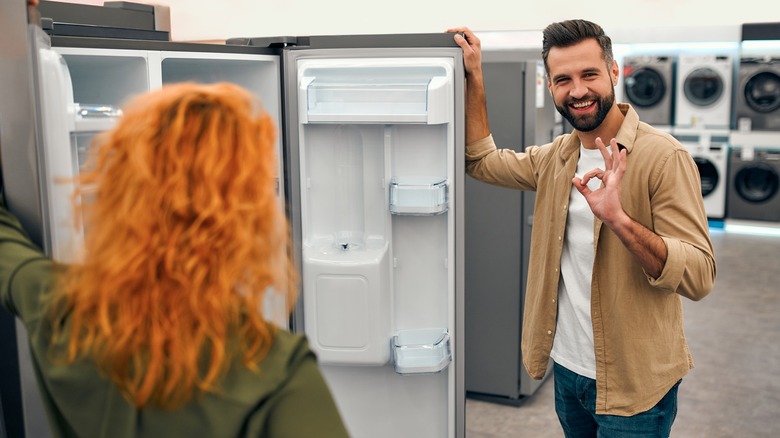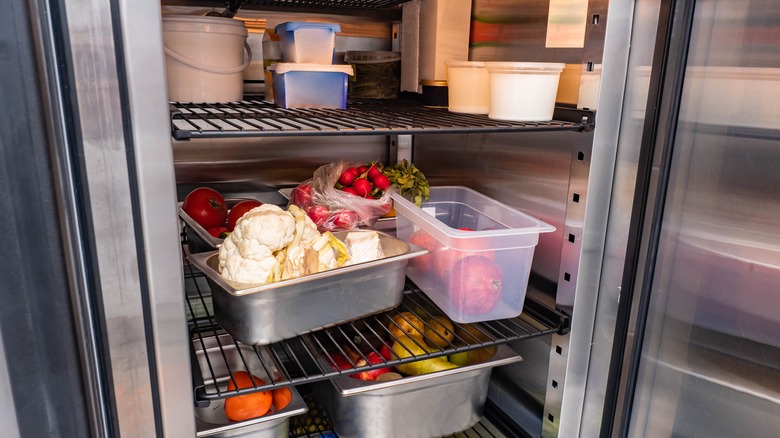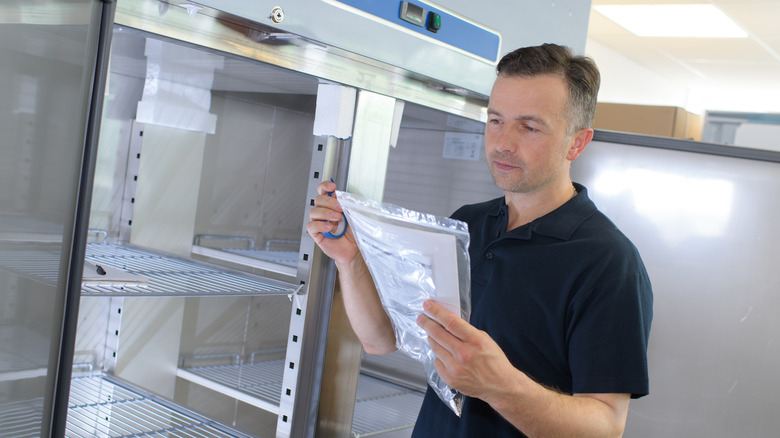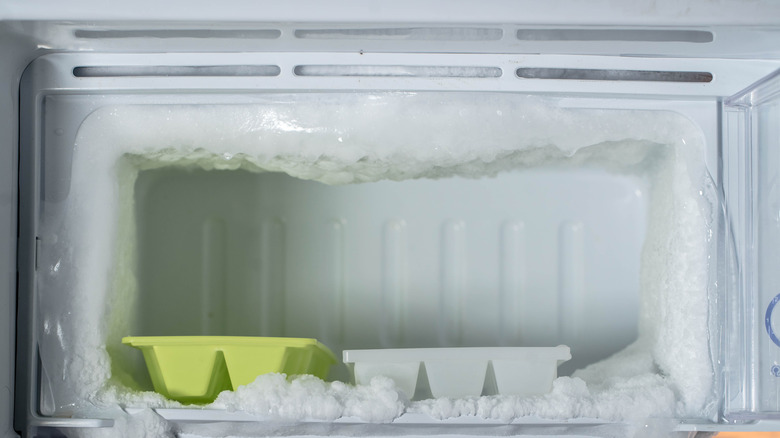5 Signs That It's Time To Replace Your Fridge
The refrigerator is one of the most valuable pieces of equipment in every home. While you may take this appliance for granted, you will be quickly reminded of its importance once there is a power shortage or when it breaks down. Think about it, how miserable would life be without the convenience of the refrigerator? However, if you invest in a quality fridge for your kitchen, chances are it will serve you diligently. In fact, the typical lifespan of most refrigerators is about 12 years before it finally bows out gracefully, notes the U.S. Department of Energy.
Most refrigerators are often not problematic which makes it difficult to determine exactly when you need a replacement or a simple repair. Nonetheless, when yours stops working, what remains constant is that you will need to spend some money. It is important to correctly diagnose the problems correctly to avoid buying a new appliance prematurely. Fortunately, there are several tell-tale signs that you should be able to recognize before your food start going bad!
Too much condensation
It is not normal for your fridge to have excessive condensation, in fact, this is usually a good indicator that there is something wrong with your appliance. Usually, condensation occurs in your refrigerator when warm air finds its way inside and condenses to water droplets. Adjusting the temperature setting can often get rid of this problem.
If not, Home Efficiency Guide suggests the first place you should check is the refrigerator door, chances are the rubber gasket is no longer providing an airtight seal. The easiest way to test the effectiveness of the gasket is by using the dollar test. Close the refrigerator door with a dollar bill between the seal and the frame and try pulling it out slowly, if there is no resistance then the door gasket is faulty. Replacing the refrigerator door gasket is an easy fix that you can do yourself. However, if the problems continue after replacing the gasket, then it might be time for you to consider replacing your old appliance with a new one.
Food is going bad prematurely
When the refrigerator fails to perform its only task, which is keeping food cold, then you know there is a problem. Having to deal with sour milk or warm beer, especially during the hot summer months, is no fun. What's more, if your fresh produce from the grocery store goes bad earlier than it's supposed to, take it as a red flag. According to the Food and Drugs Act, the ideal refrigerator temperature for storing fresh food should be 40 degrees Fahrenheit, or lower. Therefore, you need to make sure that the temperature setting is appropriate.
Since most refrigerators have a temperature-controlling knob on the inside, it is possible to unintentionally change the temperature settings when loading the refrigerator. There is also a chance that your children have changed the temperature either intentionally or otherwise, so it is best to have a look at that first. However, if everything checks out but your drinks are taking unusually longer than normal to get cold, take it as a sign that you need to get a new appliance for your home.
When the fridge is hot to the touch
A refrigerator might get warm or hot to the touch for different reasons, and this can be normal or not depending on just how hot it gets. If it gets warm, particularly on the back side, this shouldn't be a problem because heat dissipation is expected. However, if it gets too hot for comfort, it is usually a sign of internal problems. In such a case, the first order of business is to call a professional to take a look at what is happening.
The problem could be with the motor or coils and a replacement part might solve the problem. Nonetheless, remember that replacing the coils is often expensive, costing between $100 and $440, explains Forbes. For older appliances, especially those over 10 years old, the best course of action is to get a new refrigerator. You don't want to spend money on repairs only for it to start causing problems all over again.
Higher utility bills
While the upfront cost of buying a new refrigerator might be high, an inefficient appliance will cost you even more on utility bills down the line. An old and outdated refrigerator typically uses an excessive amount of power to maintain an ideal temperature. So if you have been using the same amount of power but your utility bills keep on skyrocketing, Absolute Appliances Repair suggests turning your attention to the old refrigerator in your kitchen.
According to Perch Energy, while the refrigerator might not need too much power to run per hour, it stays on continuously making it among the top energy-consuming appliance in any household. With this in mind, while shopping around for a replacement, choosing an ENERGY STAR-rated refrigerator is the best way of making sure your energy bills stay within the norm every month. Not only are they friendly to your wallet, but also go a long way in making the environment better.
Frost buildup
It's worth mentioning that dealing with frost buildup in the freezer is not necessary for new models of refrigerators. However, if you find that you need to chisel away just to retrieve your bag of peas, then your appliance might be to blame. Remember, the freezer needs to keep your food in a frozen state, however, when the interior quickly turns into Antarctica, then it is a sign that something is wrong. If you find yourself in this situation, fret not, you first need to defrost the freezer.
Summit Appliance advises against going in with sharp objects chipping away on the block of ice. Rather, turn off the appliance and place a bowl of hot water inside the compartment to speed up the process. After defrosting, turn your fridge back on and check if the problem recurs. If it does, you might want to consider getting your kitchen a modern fridge so that you won't have to deal with this problem again. Frost is not only unsightly but also contributes to energy inefficiency in your fridge, therefore, you need to deal with this problem as soon as it arises.





